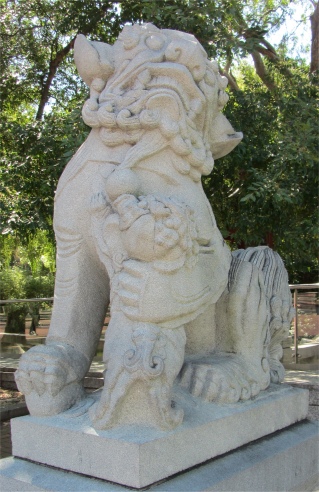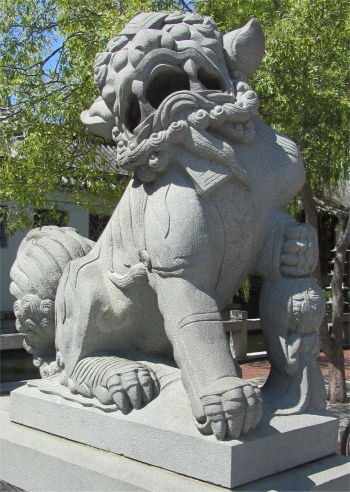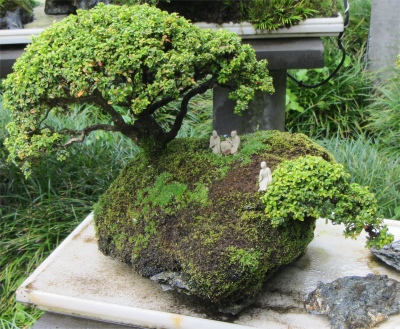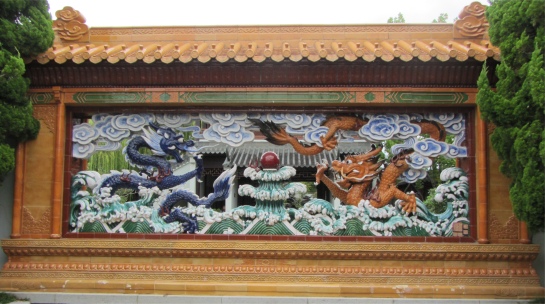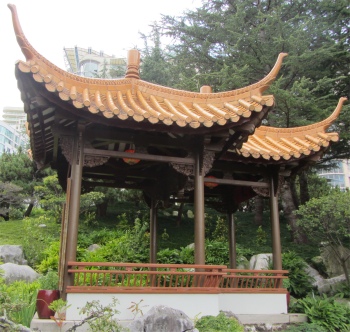
Twin Pavilion
|
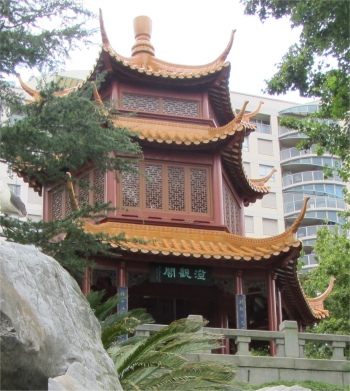
The Gurr
|
Just past the entrance was a Penjing Courtyard. Meaning "tray scenery", penjing is the Chinese art of creating a miniature landscape. Penjing can range from single trees to detailed scenes reminiscent of paintings. The Japanese equivalent is Bonsai.
I came across the Dragon Wall inside the garden, just begging to be captured on camera. It features two coloured dragons: the gold-brown represents Guangdong and the blue represents NSW. The Pearl of Prosperity, carried by a wave between the dragons, symbolises the bond between the two states.
From the Water Pavilion of Lotus Fragrance, panoramic views were to be had across the Lake of Brightness to distant pavilions, and koi swam effortlessly amidst reflections on the still water. In summer, the magical fragrance of the flowering lotus (a symbol of purity and perfection) drifts across the lake.
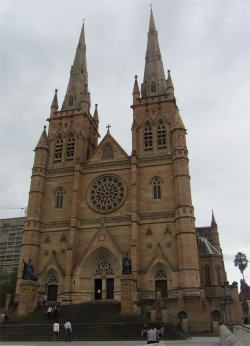
St Mary's Cathedral
|
I couldn't help noticing the abundance of bamboo around the garden. Bamboo is a symbol of old age and humility, and is one of the "Three Friends of Winter", along with the pine and flowering plum.
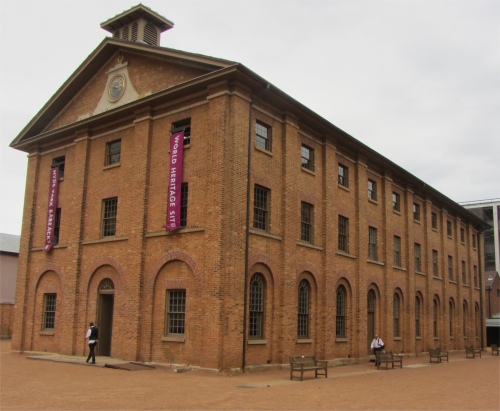
Hyde Park Barracks Museum
|
With its unique double roof, the elegant Twin Pavilion was a gift from the people of Guangdong to the people of NSW and symbolises friendship and cooperation between the two states. The waratah, the floral emblem of NSW, and the red silk cotton tree, the floral emblem of Guangdong, are depicted on the wood carvings.
As well as bamboo, there was also a lot of rock strategically placed around the garden, one area in particular being the Rock Forest. Here, based on an ancient Chinese poem, the Rock Forest tells the story of the Dancing Maiden Ashima and the Landlord. There are several variations to this tragic love story, but it always culminates in the drowning of the beautiful Ashima, whose spirit is transformed into a beautiful "dancing rock".
For the full experience, costume could be hired and I could have played the part of a mandarin as I strolled around this sanctuary. My dress sense is hideous enough without having to resort to costume.
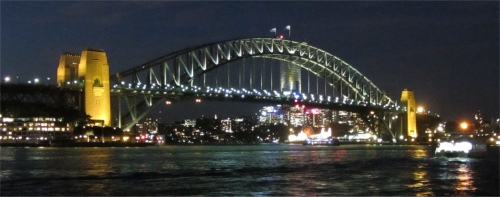
Sydney Harbour Bridge at Night
|
I hiked across town to Hyde Park, a scaled down version of its London counterpart. It gave me the opportunity to take a closer look at the Anzac Memorial. This beautiful greyish-pink granite memorial is dedicated to the Australian and New Zealand troops who fell in World War I, in particular those who fought in Gallipoli. A service of remembrance takes place here daily at 11am. It had been designed in art-deco style, and served as a museum dedicated to those Australian servicemen and women who had played their part in armed conflicts over the last century.
The park naturally led me to St Mary's Cathedral. The sandstone Catholic cathedral is the largest Gothic cathedral in the southern hemisphere. The stunning terrazzo floor depicts the six days of creation.
At the top end of the park I visited the Hyde Park Barracks Museum. This elegant Georgian building is part of the earliest group of public buildings still surviving in Australia today, and had recently been granted World heritage listing.
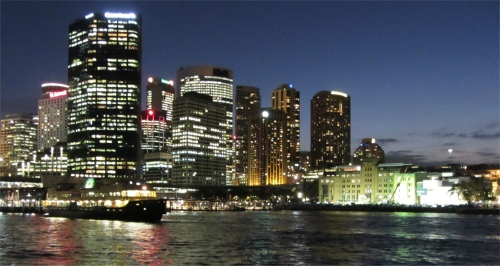
Circular Quay at Night
|
Completed in 1819 with the objective of housing 600 male convicts, the barracks were oddly enough designed by Governor Macquarie's convict architect, Francis Greenway. It stood at the centre of the world's largest, longest and most diverse system of transported convict labour. More than 50,000 convicts passed through its gates from 1819 to 1848. The convicts stayed in government employment until 1848. The barracks then served as an immigration depot, an asylum for destitute women, a bustling centre of courts and government offices, and eventually became a museum. Part of the museum contains a recreation of the dormitories with their rough hammocks, accompanied by eerie sound snippets.
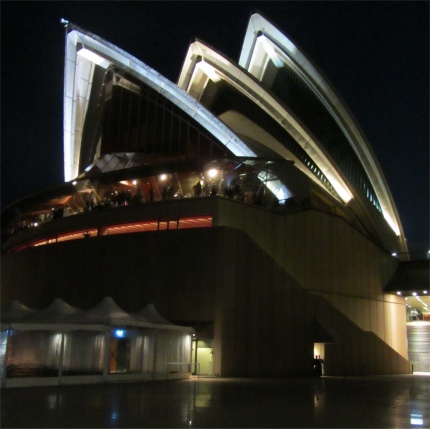
Part of Sydney Opera House at Night
|
An exhibition focussed on the earliest convict history, outlining the contributions some of these men and women eventually made to Australian society.
One interesting aspect that I had not expected was the story of the orphaned Irish girls. During the late 1840s, when the potato famine was wreaking havoc in Ireland, over 4,000 orphaned Irish girls were shipped out to Sydney. As I read about this, it took my mind back to a similar incident in my lifetime, when many unwanted children were sent from Britain to Australia, often ending up as virtual slaves.
I found this museum exceptionally good in how it presented its story.
Although I had only visited a few sights, I felt as though I had reached my limit for the day, and casually made my way in the now warm sunshine to Darling Harbour. Office workers were already streaming out of anonymous blocks of steel and glass, some heading for bars, and many others heading down to the harbour to catch one of the many commuter ferries. I found the only place on the waterfront that sold nothing but coffee, and sat in the therapeutic rays, wrote my notes, and watched commuters sprinting by to catch their boats.
The idea of having to catch a boat to and from work has a kind of romantic appeal to me, though it must be a nightmare when the water is rough and folk are a bit green about their gills. Sydney has a very integrated transport system. My son Dan works as a transport planner in London. At one time he had been involved in reviewing reports concerning the integration of Thames based and land based transport. Trying to bring land transport within spitting distance of the jetty options along the Thames would be a very formidable task.
The evening just passed by with me walking seemingly miles along the waterfront.
